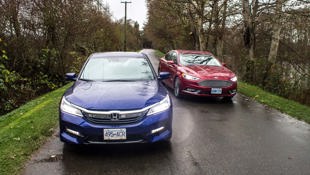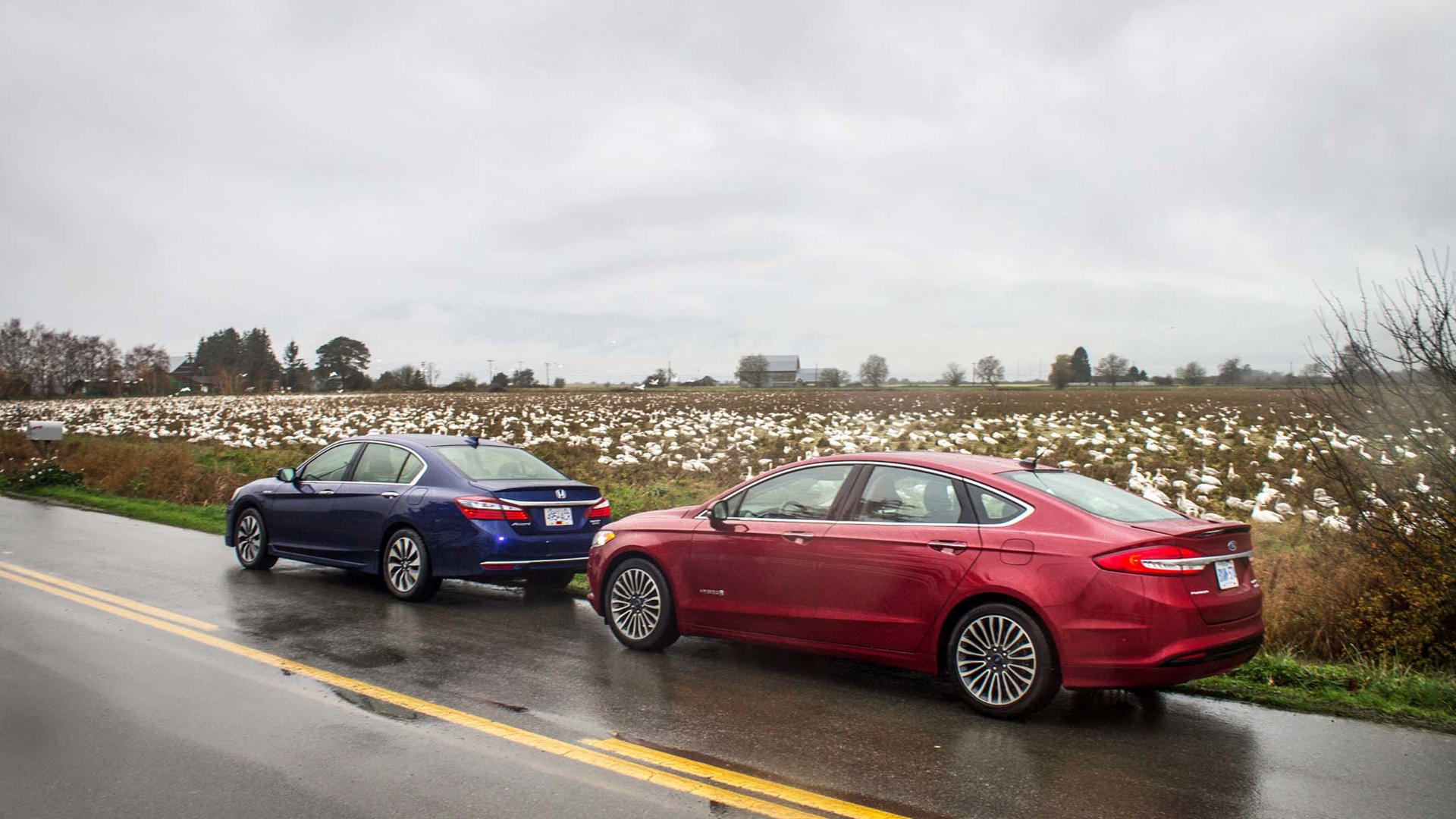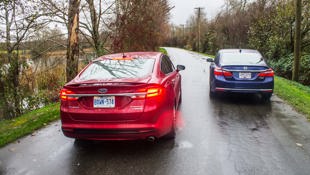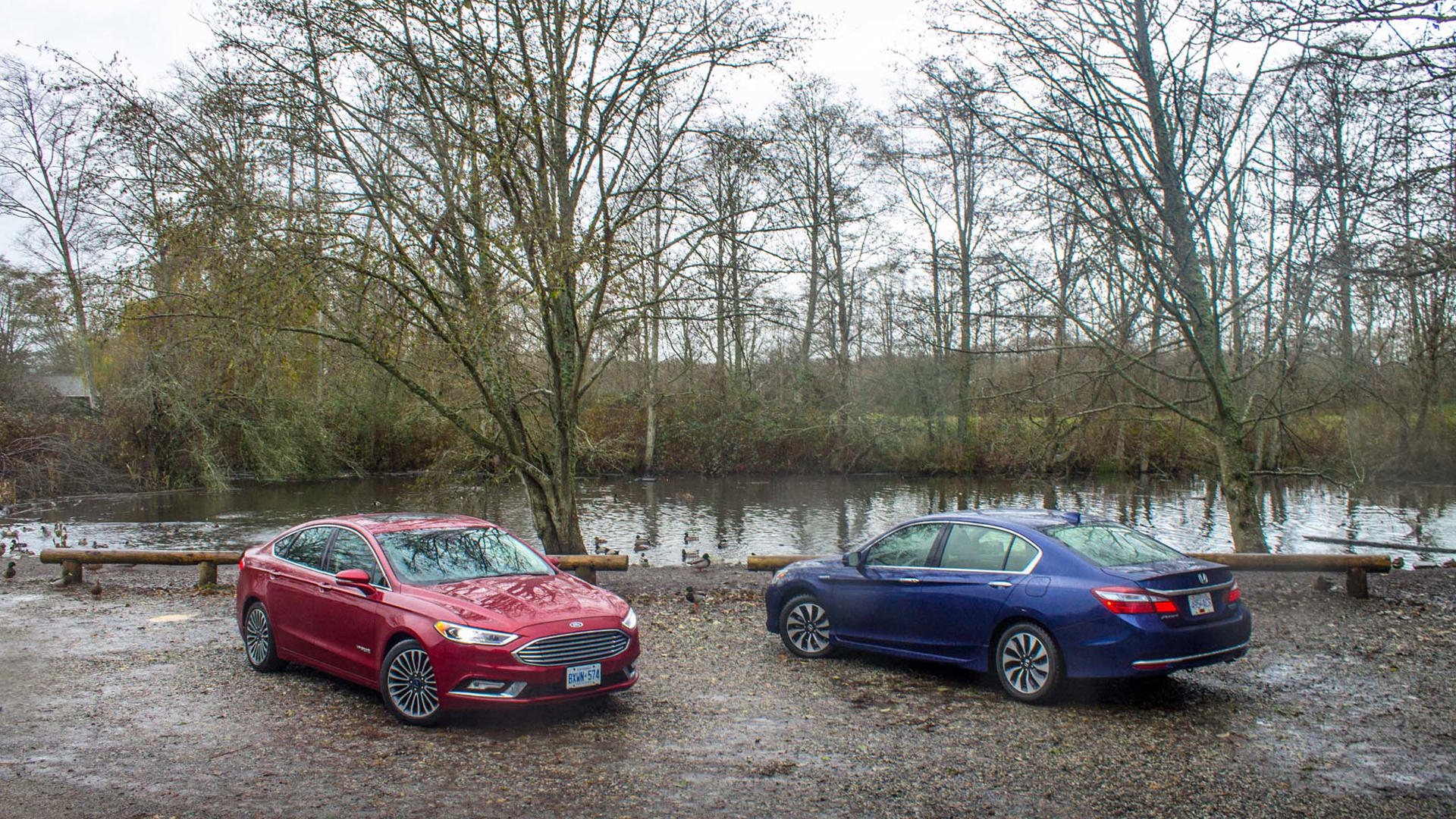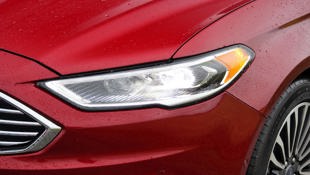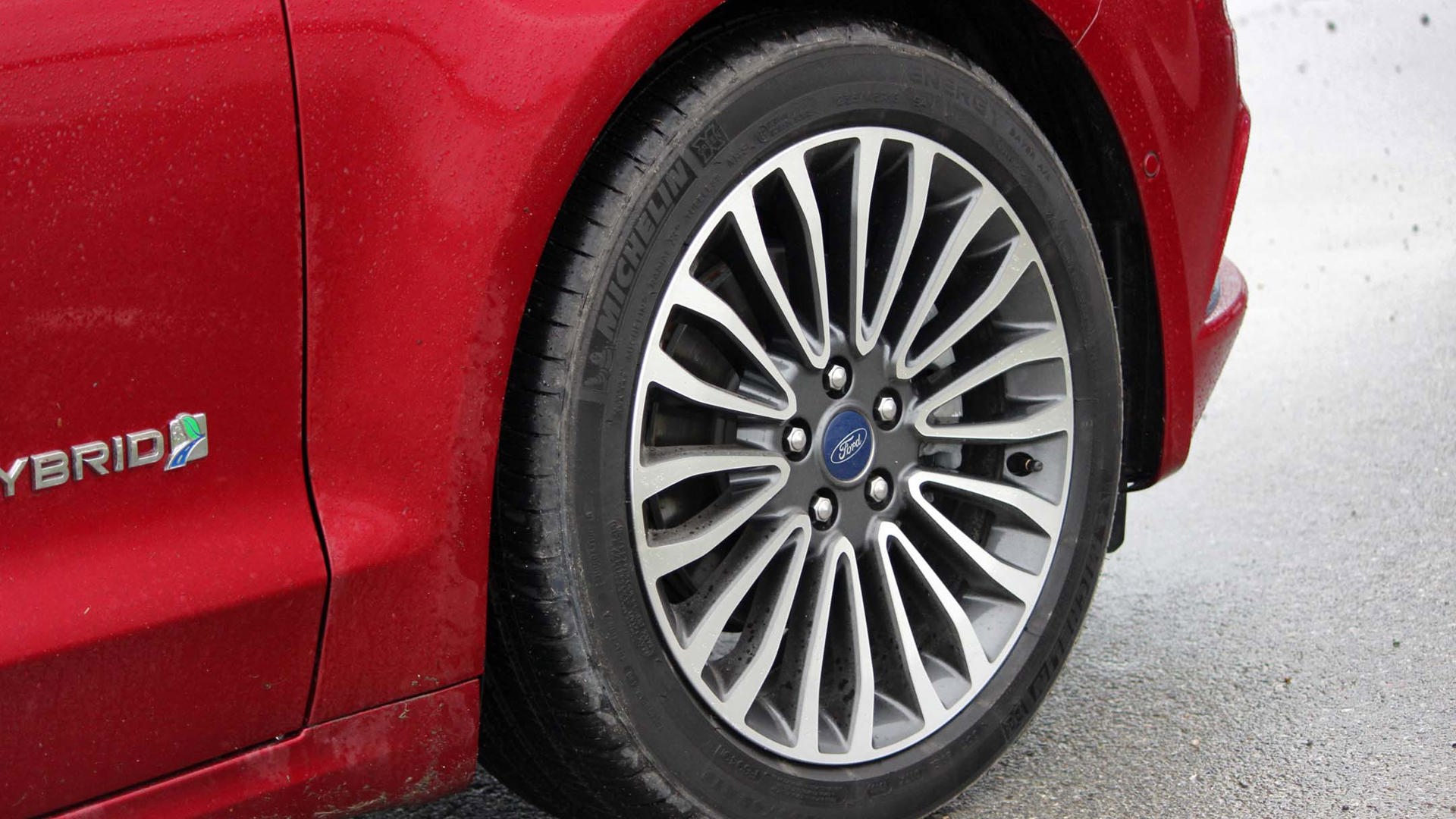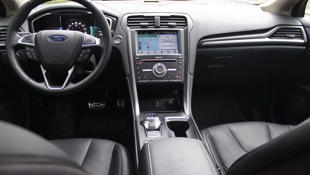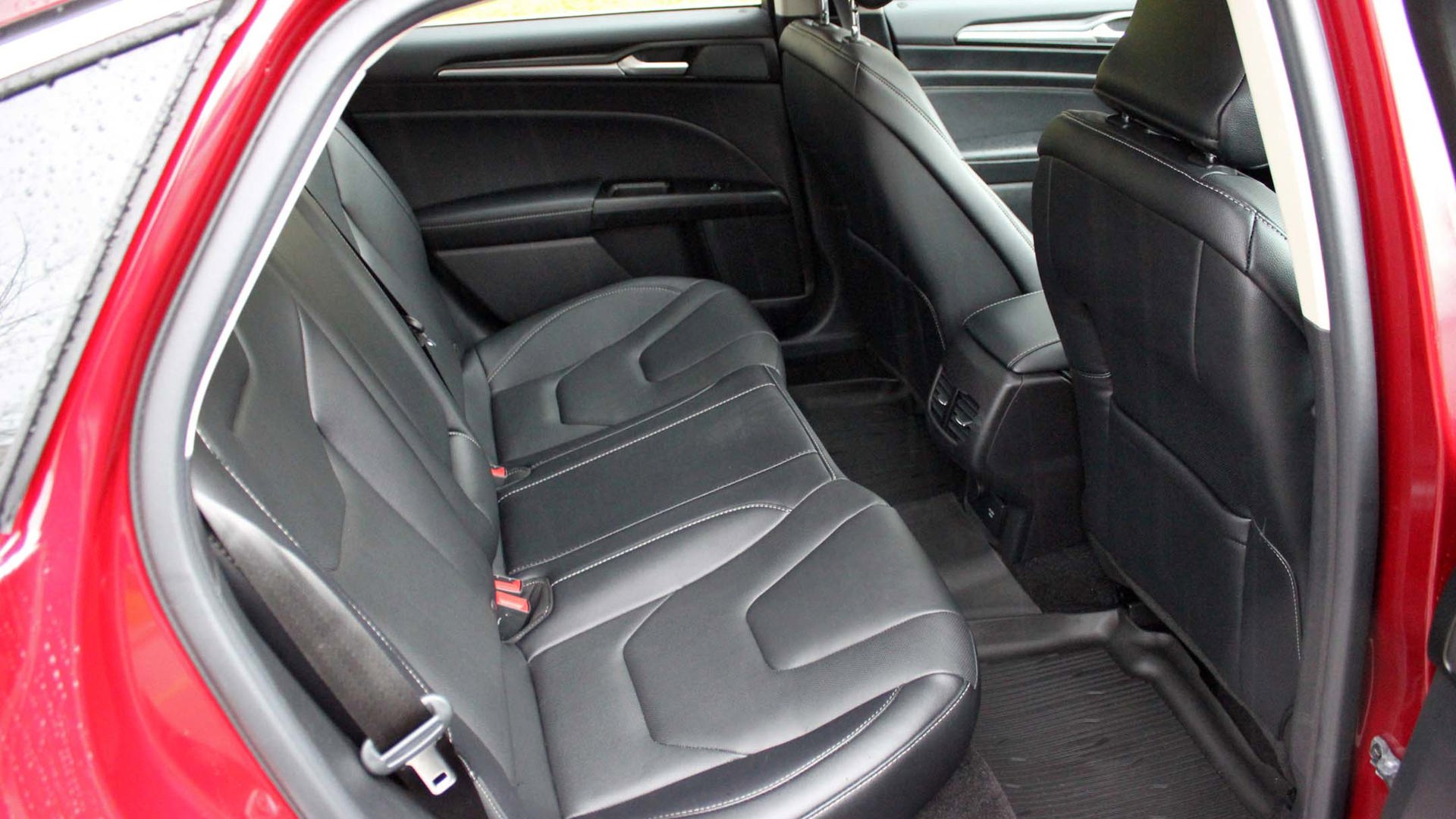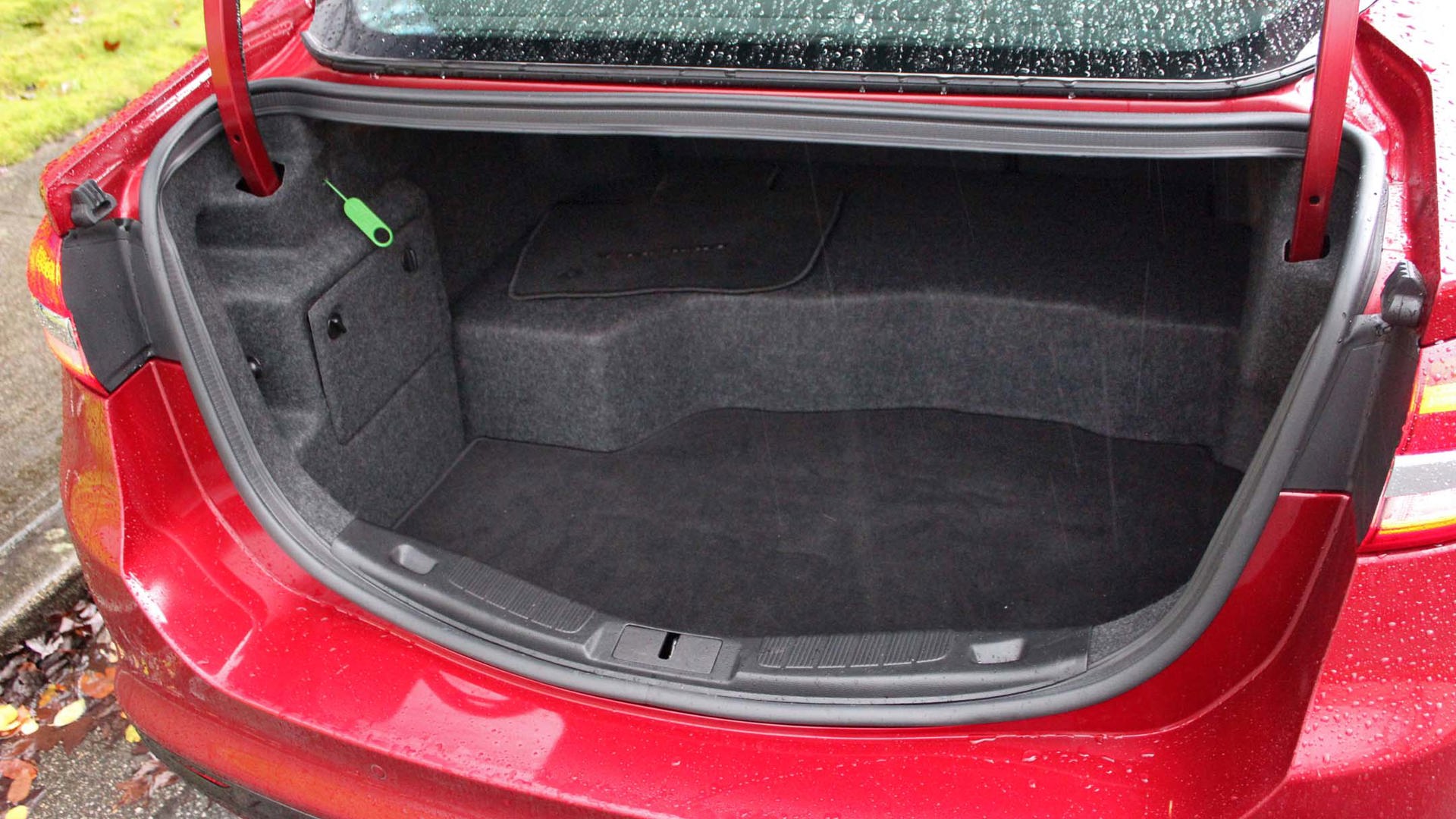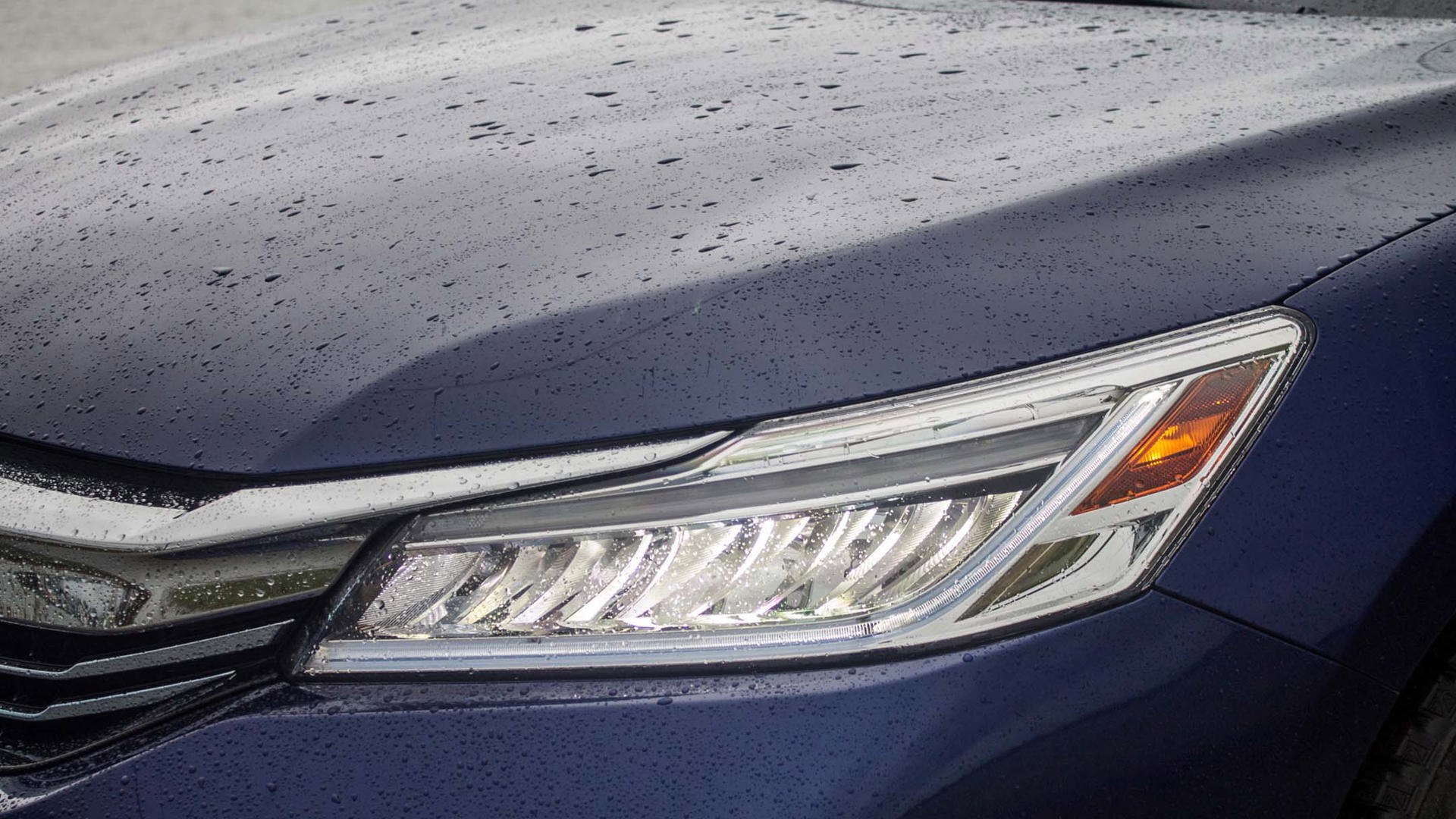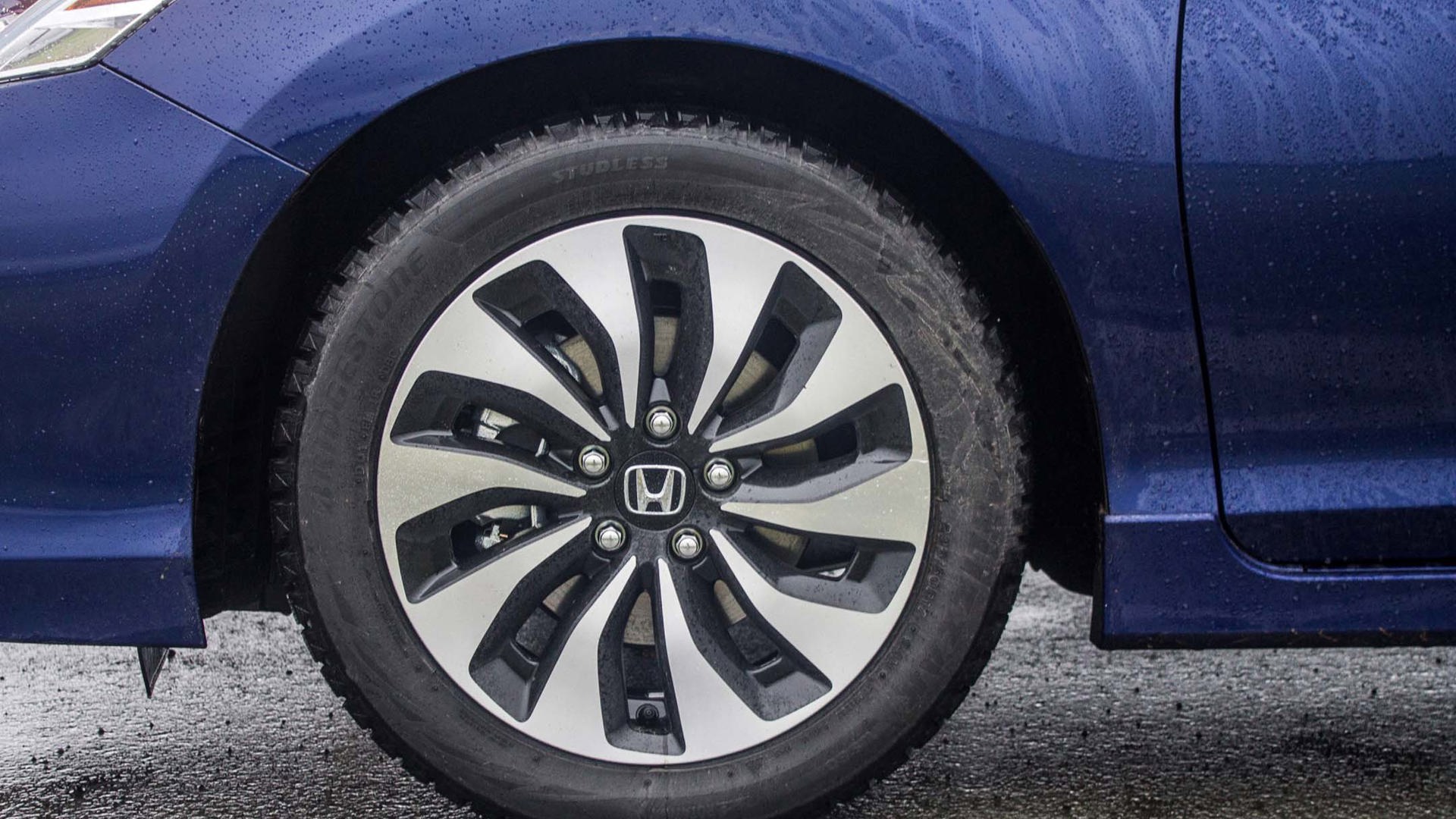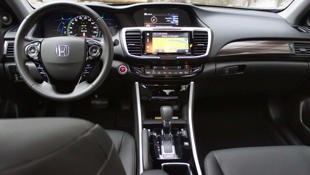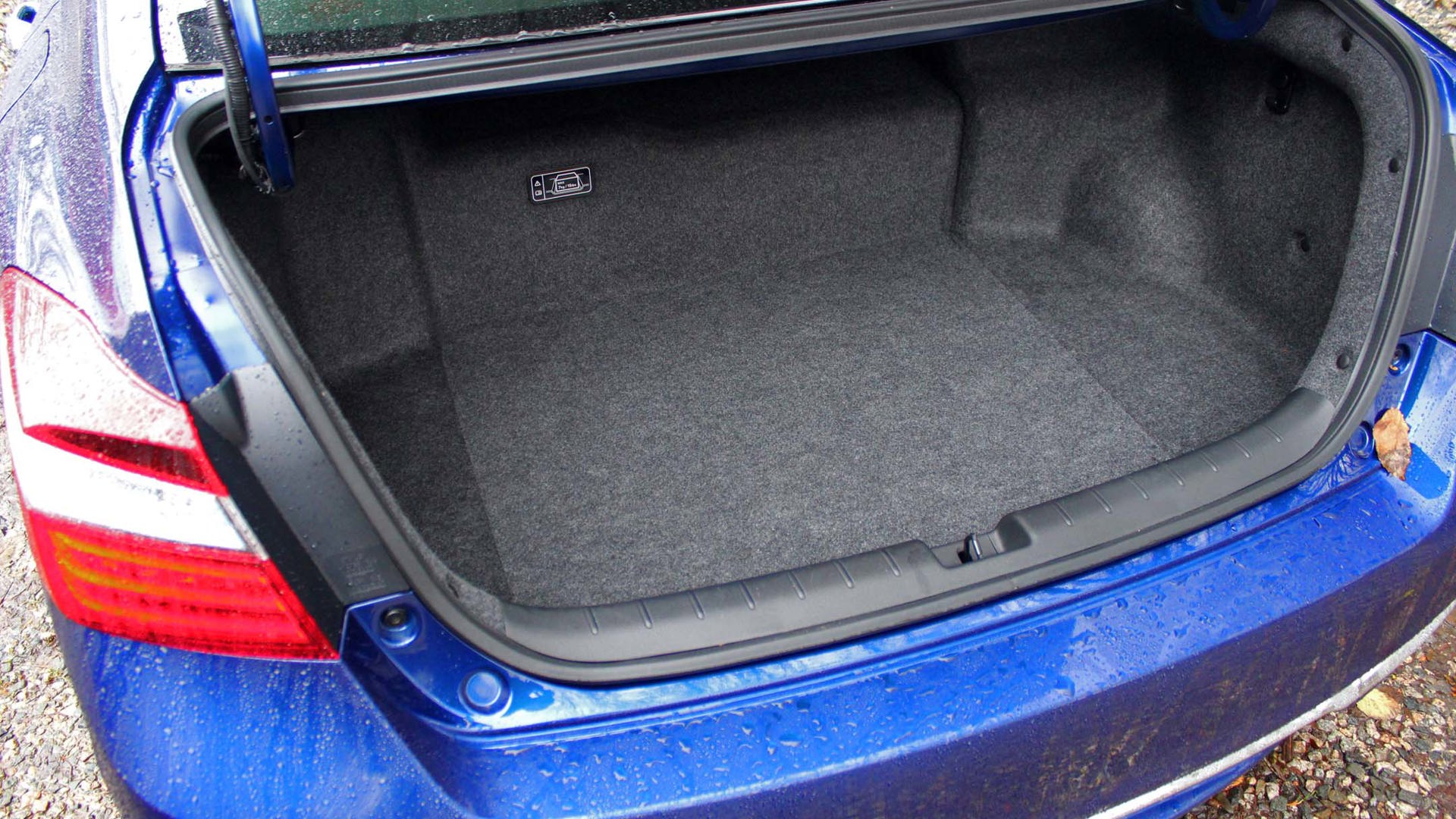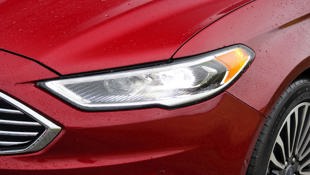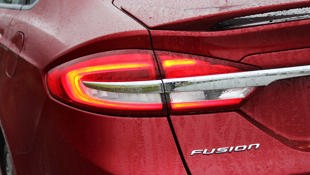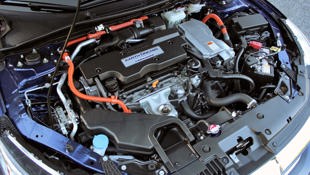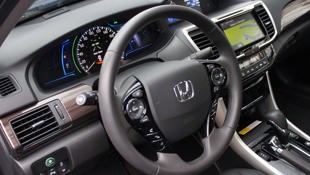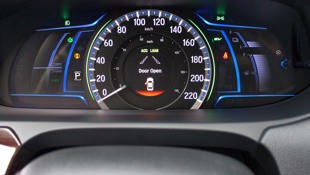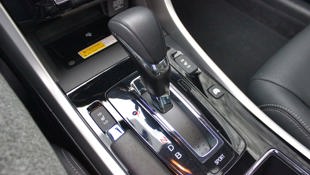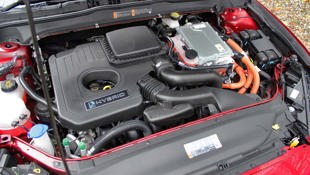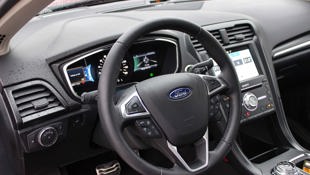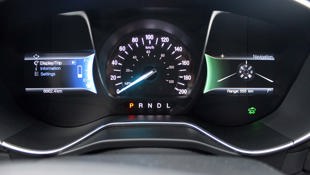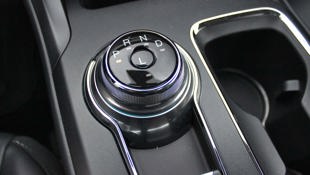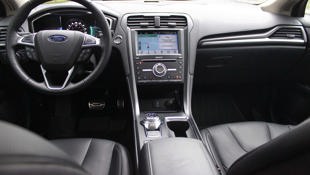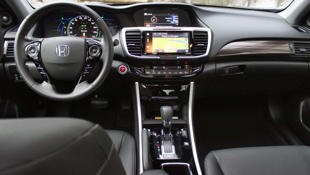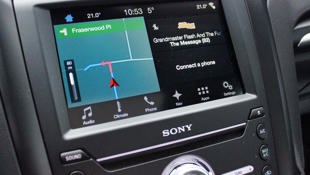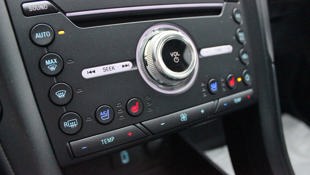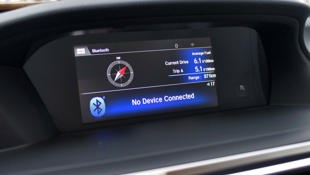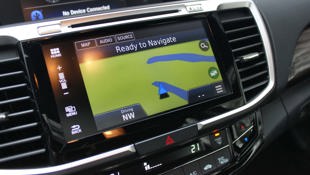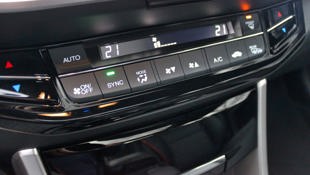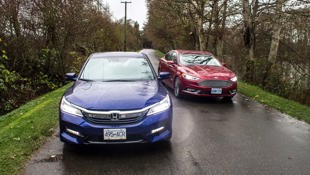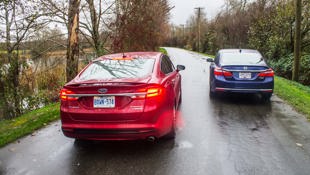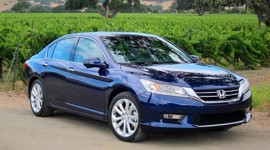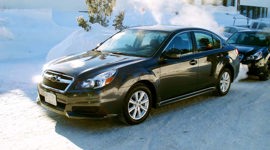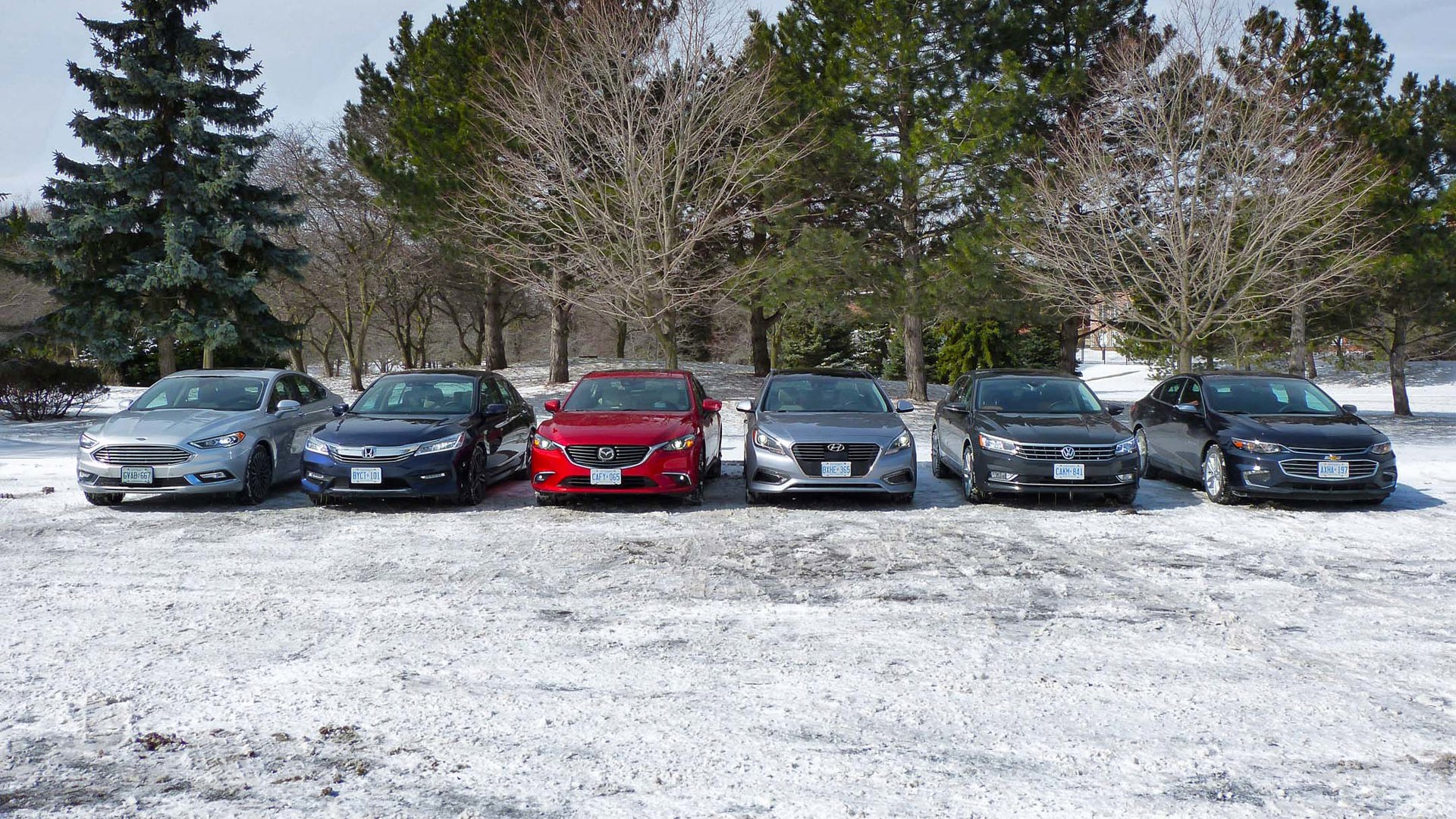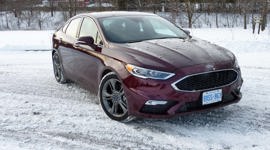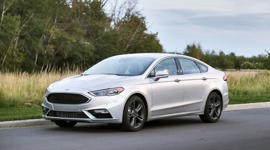Comparison Data
|
2017 Honda Accord Hybrid Touring
|
2017 Ford Fusion Hybrid Titanium
|
|---|---|
|
Engine Displacement
2.0L + electric motor
|
2.0L + electric motor
|
|
Engine Cylinders
4
|
4
|
|
Peak Horsepower
212 @ 6,200 rpm
|
188 @ 6,000 rpm
|
|
Peak Torque
232 @ 0–2,000 rpm
|
177 @ 4,000 rpm
|
|
Fuel Economy
4.9/5.1 (L/100 km, cty/hwy) 1.4 kWh battery
|
5.5/5.7 (L/100 km, cty/hwy) 1.4 kWh battery
|
|
Cargo Space
382 L
|
340 L
|
|
Base Price
$37,300
|
$34,988
|
|
A/C Tax
$100
|
$100
|
|
Destination Fee
$1,695
|
$1,650
|
|
Price as Tested
$39,095
|
$44,138
|
|
Optional Equipment
None
|
$7,400 – Ruby Red paint $450; premium floor/trunk mats $150; moonroof and garage door opener $1250; Active Park Assist $600; engine block heater $100; heated/cooled seats $600; adaptive cruise $1,500; navigation system $800; Driver Assist Package lane-keeping system, blind-spot detection, $1,950)
|
Brendan says:
Here are two for the birds: the hybrid versions of the family-friendly 2017 Honda Accord and 2017 Ford Fusion. As compared to a dedicated hybrid machine like the Prius, these two represent a choice someone might make over the standard four-cylinder family sedan, likely for environmental reasons.
The considerable price bump over a standard Accord or Fusion takes considerable mileage to make the fuel savings make sense, but if your concern over burning gas is more about carbon dioxide emissions, then both of these are a premium choice. Go for the V6 if you want speed, go for the hybrid if you want green.
However, there’s another factor here too. Often, checking the box for the hybrid option presents packaging concerns. Adding in a secondary electric drive and a battery pack can compromise the day-to-day livability of a normal family sedan. Modern batteries are getting more compact and power-dense, but there’s still going to be a loss of trunk space.
To find out which hybrid sedan is best at getting the balance right, we topped off the tanks and headed out for a spot of bird-watching. After all, the weather’s perfect for an outing – if you’re a duck.
Styling
Brendan says:
Honda’s current styling trends don’t ruffle feathers like, say, Toyota, but they’re not always cohesive. Just look at the back end of a Civic coupe and you’ll see what I’m talking about. However, the Accord is among the best-looking cars Honda puts out, and certainly one of the most cohesive.
Over the standard four-door, Honda has made their hybrid version look a little Acura-ish, fitted out with LED headlights and foglights. It’s a far-better-looking car than the previous year’s gawping-grilled plug-in version, but doesn’t really stand out. 17-inch alloys are standard for this Touring trim version.
The Fusion, on the other hand, is a pretty handsome-looking machine. Even considering the amplification of its red paint against the sodden and colourless background, it’s the standout of the two, with its Aston Martin–tribute front grille and 18-inch machined alloys. Parked in front of a group of disinterested waterfowl, it looks more substantial than the Honda, and makes more of a statement. Advantage Ford.
Dan says:
What we have here is a pair from two very distinct styling languages: The Fusion has its classic elements; the chrome grille, wire-ish alloys and slightly sleeker profile, while the Accord flips that for a futuristic ensemble that comes to a point with that front end. I’m a fan of Honda’s 3D grille and sleek headlights; while not quite as divisive as the “beak” grille on older Acuras, people seem unsure of Honda’s new styling, and that includes this Accord Hybrid. Is it trying too hard, or is it what more cars should be striving for? I tend to lean towards the latter, but I do like the more premium look the Fusion provides. This one’s a toss-up for me.
Performance and Handling
Dan says:
It’s not often that a hybrid sedan’s performance is something of a stand-out feature; a smooth ride, quiet operation and of course, a hybrid’s real-world efficiency are what we tend to look for. In the case of these two, however, the on-road performance is a standout feature, but for different reasons.
First of all, you have the Accord. Rare is it that you’ll experience a hybrid that is as fun to drive – yes, you read that right – as this is. I guess it starts with the power: the four-cylinder, naturally aspirated gas engine is rated at 143 hp and 129 lb-ft of torque, but when you add some electric power to the equation, you’re treated to 212 hp and 232 lb-ft of torque, enough to get the Accord up and at ’em in a sprightly manner. Even the CVT transmission doesn’t get in the way of brisk acceleration as they often do; you can thank the extra thrust put forth by the EV engine for overcoming the linearity of the CVT. It’s remarkable, really, how quick the Accord Hybrid feels, and it never gets old.
It’s especially remarkable when you consider the Fusion Hybrid. It, too makes use of an Atkinson-cycle four-cylinder paired with an EV motor, to the tune of 188 hp and 177 lb-ft of torque. If you can consider those figures for a moment, you can pretty much tell where we’re going to go from here.
The Fusion is okay to start: pick-up from stop is fairly strong, allowing you to squirt from stoplight to stoplight or change lanes in a relatively quick manner. It’s once you really start moving that the Accord starts to pull away. It’s no slight difference, either. At speed the Accord feels worlds faster than the Fusion, as the power gully between the two really starts to make itself felt.
Worse still for the Ford is the way it goes about the business of being slower than the Honda: you can really hear the gas engine working as you increase the load on it, and there’s quite a lot of noise to go with not that much forward progress. I genuinely felt that the Fusion – even though it can reportedly cruise at up to 135 km/h in EV mode – is just not suited for the highway. Indeed, hybrids rarely are but it’s really felt here.
The Fusion’s curb weight doesn’t do it any favours either, as it weighs some 50 kg more than the Hybrid Accord, even though the latter bore the heavier Touring trim package. Electing to go with the base Accord Hybrid trim saves an additional 19 kg.
The Accord, in comparison, goes about its business serenely, providing an almost luxury-car-like feel to go with the proceedings. That’s the case whether you’re in town or on the highway, at least when it comes to engine and road noise.
Where said gully is less apparent is when you consider the ride of these two vehicles. I’ll start off by saying this: the ride of either car is very, very good. Both of these sedans glide over the most common road imperfections, barely getting out of sorts, barely breaking a sweat over train tracks and the like.
Thing is, being a Honda, the Accord needs to be an able handler – that’s kind of the brand’s modus operandi – which means a slightly firmer ride that what’s provided by the Fusion. Indeed, the chassis tuning does help the Accord hide its girth as the bends get more frequent, but I always had that feeling that there was a little more going on beneath me. The Fusion, for its part, provides not only a more luxurious ride but a quieter one too, as long as you’re not straining that engine. In fact, during a particularly rainy spell on our test, we couldn’t help the feeling the Accord had a window open somewhere, so loud were the raindrops on the car. It almost made it sound tinny, as if we had a corrugated steel panel on the roof.
The Fusion? Near total silence, no doubt helped by the Fusion’s excellent active noise cancellation system. The Accord gets one too, but it just isn’t as effective.
Where the Accord clearly jumps ahead again, however, is in the steering department. The Fusion’s rack is so bereft of feel, so woollen that you have to wonder if churning a vat of butter would lead to more feedback. The disconnect you feel from the outside world thanks to that wonderful ride we talked about is echoed with the steering; unfortunately, that’s not necessarily a good thing. It just takes too long for the Fusion’s nose to start going where you think you’ve pointed it.
The Accord, by comparison, may as well be a race car with an ultra-high steering ratio. Extreme? Perhaps, but the Fusion’s rack is such that the comparison did jump in to mind, and you can’t help that.
Brendan says:
Hybrid sedans are almost always an exercise in compromise, meaning you’re trading off handling and acceleration for green creds. All that effort engineers have put into making a family four-door have a little verve is usually ruined by stuffing in a heavy battery and secondary motor; further, usually some reprogramming to deaden the throttle is done to help improve fuel economy. It can feel like you’re driving around in the car equivalent of a fat suit.
Here though, the Honda drives surprisingly well. The instantly available electric torque is actually a boon, making the hybrid version feel zippier off the line than the standard four-cylinder. Handling is pretty good too, enough to make a commute feel energetic. Despite the super-soaker of a day, the Honda paddled through the puddles with ease, perfectly composed no matter the weather.
The Fusion, on the other hand, comes up short. Despite promising a sporty-ish drive with those 18s and rear spoiler, it’s actually a bit of a damp squib. It’s not just the power gap either, but the way in which it responds to inputs from the steering or throttle. The best that can be said is that the Fusion encourages a laid-back driving style that’ll result in good fuel economy, and that it is smooth and substantial-feeling on the road. But I’d rather be driving the Honda.
Comfort
Brendan says:
From the photos, you’ve likely guessed that the Ford is the larger and more spacious of our two hybrid sedans. Not so – somehow, Ford has pulled its reverse-Tardis trick here and managed to make the Fusion feel about as roomy as a compact Focus. It doesn’t feel like a mid-sizer from behind the wheel, and the rear seats don’t offer as much room.
The Accord is much better, offering an airy-feeling cabin with plenty of space to stretch out. We put Dan’s 6'3" frame in the back of the Honda without a problem, so if you’re carting around a couple of growing teenagers, no problem.
When it comes to trunk space, the Fusion claws back a few more points with a pass-through (the Honda has no folding options), but loses on total volume: 340 L for the Ford next to the Accord’s 382 L. Both represent a loss of space next to their conventionally powered stablemates, and while we’re on the subject, it’s worth pointing out the plug-in version of the Fusion has just 232 L of space. Still, eyeballing the amount of cargo hauling on offer reveals two trunks that’ll be a little tight come vacation time, but handle the usual Costco run just fine.
Over the road, both Fusion and Accord display decent comfort levels, with the Fusion being the more quiet and composed of the two. Honda had fitted winter tires to the Accord, Bridgestones with aggressive tread, so we can chalk up some of the Ford’s advantage in road noise to its quieter tires. However, as mentioned previously, the Fusion is the more substantial feeling and smooth-riding car.
Yet if required to put in a couple of hours of commuting, I’d rather be seated in the Honda. It’s not just the roomier cabin, it’s that the seats are more comfortable. I’m pretty average-sized at 5'11", but taller drivers will appreciate the Accord’s longer seat bottoms. It’s also just cushier overall.
Dan says:
Yeah, getting myself into the back seat of the Fusion was a challenge; the legroom is okay, but at 960 mm, the headroom leaves a lot to be desired both front and back. The Accord, on the other hand, is as comfortable as I’ve ever been in a mid-size sedan, both back and front. What’s strange is that Honda is actually claiming less headroom that Ford is, but there’s no denying that the rear of the Accord still felt roomier to me. It could be the angle of the bottom seat cushion, perhaps, but I may as well have been in a pillbox in the Fusion.
I’m also a big fan of the seats in the Accord. They’re properly padded, but padded in the right places so they remain supportive as well. The items in the Fusion are a little thinner, and I also found the bottom cushion didn’t support my thighs as well as the Accord’s seats.
It would be nice for Honda to have at least given the Accord something to make hauling your wares a little easier. The Fusion’s flip down seats offer both the option to fit longer items into the trunk, as well as larger items into the back seats, resting on the almost flat-folding rear seatbacks. Yes, the Accord technically has the bigger trunk, but I’d argue the Fusion has a more usable one.
Tech
Dan says:
A clear win for the Fusion here.
It’s not that the Accord’s set-up is bad – far from it – but the Fusion’s is so good that the choice is an easy one, save for one glaring issue.
It starts with SYNC3 infotainment, which has quickly become a top contender in the “best infotainment” sweepstakes. That’s a pretty far cry from where we were not two years ago, when MyFord Touch was still the slow quadrant-based system it had pretty much been from the start.
Now, the system’s fantastic graphics, responsive touchscreen and intuitive interface will quickly make most forget about what once was, and start focusing on the now. Or, if you still don’t like the Ford’s native interface, then go ahead and plug in your iPhone or Android device, as both Apple CarPlay and Android Auto are supported. If you can’t decide which interface you prefer, then you can easily swap between them.
The Accord gets a touchscreen, too. In fact, the Accord gets pretty much touch-everything. The climate controls remain a knob-and-button affair, but all things media are controlled via either the screen ore the touch panel on its left side, where the volume slider is: the volume is controlled not by a traditional knob, but by a teensy-weensy slider panel that’s pretty much impossible to use. Oh, there are wheel-mounted buttons, but some good that does the passenger and many a driver’s natural instinct is to reach for the centre stack in order to modify sound settings. The recently released ’17 CR-V crossover has been given a volume knob; I suggest Honda does the same with the Accord.
The Accord’s centre stack looks better though, which brings us to that pitfall we were talking about with regard to the Fusion’s infotainment. It’s not the system itself so much as it’s the panel in which said system is housed. It’s finished in acres of scratchable plastic, and is so littered with buttons that – as Brendan puts it – it gives the impression of a big calculator. Couldn’t they have dropped some piano black here, or some aluminum there?
The Fusion does get more “stuff” overall, though: heated steering wheel, heated and cooled front seats, adjustable active lane-keep assist. The dial shifter helps make for an airier cabin, and also allows for an extra storage bin within the transmission tunnel since there’s no need to stuff a shift linkage in there.
About that active lane-keep assist: you can either have it steer you back on track or just vibrate the wheel as you wander, with the latter being adjustable to three levels of intensity. I do wish, however, that the sensitivity of the active system could be adjusted too, as we found it too eager to step in. Adding insult to injury, the car also features a driver alert system that cautions you to pull over if it senses you’re weaving too much. With the auto steering being so sensitive, the system was overly quick to warn us of this.
Of course, all this is before we’ve come to the Fusion’s one great party trick: the $600 active park assist fitted to our tester, and that isn’t even an option on the Honda. To activate, simply slow down as you come to your chosen spot (it can be either of the parallel or perpendicular variety), press the button marked with a steering wheel and “P” located below the shift wheel, and the system does the rest, with you just having to modulate the brake pedal. We tried it numerous times, and every time, to put the Fusion within a half-foot of the curb or parking demarcation line, with little complaint. I thought it was gimmicky at first, but I found myself using it more and more often.
A feather in the Accord’s cap, however, is its reverse camera. It’s much sharper than the item found in the Fusion. It also managed to stay cleaner after all that rain. Brendan and I have mixed feelings about the other aid displayed on the upper of two screens: the Honda LaneWatch system. By now, chances are you know it well: the screen becomes one giant blind-spot camera either when you indicate right, or tap the button on the tip of the left-hand stalk. I personally think it’s quite effective, but I’m fairly certain Brendan will say it’s cheesy, and a standard blind spot system that audibly warns you is enough.
Brendan says:
If you’re in the habit of running over cyclists every time you turn right, then yes, LaneWatch is a good idea. However, it’s a bit of an either-or option when it comes to blind-spot monitoring: you can see this in the Pilot, where the top-level trim has blind-spot monitoring but no LaneWatch. Essentially, Honda’s started down this path and is committed to the idea. I’m not so sure it’s all that useful.
As to the rest of the tech breakdown, well, is “menu-ier” a word? It should be. The Honda is more menu-y than the Fusion, with adjustments often buried in confusing ways. You could get used to it, but it’s less intuitive. Oh yes, and give us a volume knob for Pete’s sake.
Value
Brendan says:
Both Ford and Honda offer their hybrid sedans in lower trim levels, with the Fusion being available from a hair under $29K. That’s a little less expensive than the basic Accord, though our two testers come out around the same price, depending on options.
Essentially, Ford offers you more choice – and expects you to pay for it. The seven grand or so worth of driver’s aids and extra add-ons are great to have, and most of them aren’t available on the Accord. Actually, on the Accord Hybrid, you don’t even get to choose your colour: it’s blue or nothin’.
So, while the Accord’s one-price-fits-all strategy will probably work for what’s a small segment, I’m hesitant to pass it the overall value crown just because it’s less expensive than the Ford. After all, these cars are pitching hybridization as a premium offering; are not their owners going to want to add on all the possible bells and whistles?
One quick mention on fuel economy, which of course is the primary reason you’d be looking at a hybrid in the first place. On paper, the Ford lags a little behind the Honda, despite being down on power. Our hand-measured results showed both cars nailing their targets, with the Honda about 0.5 L/100 km better than the Ford. While that’s not such a big gap as to make a difference, I’d point out that the Honda’s instant-on electric torque down low lets you have a zippier-feeling drive, but it still delivers the goods on fuel economy.
Dan says:
Yes, the Accord does slightly better on the fuel economy front, which is important at this level but at half a litre per, I wouldn’t call that the clincher for the Honda. Indeed, the Ford actually has quite a lot more to offer in the features department, including stuff like the heated wheel, heated and cooled seats, active park assist and various colour choices that the Accord doesn’t even offer, even on top-spec Hybrid Touring trim. Yes, obviously the ticket on the Fusion is a little higher, but you do get a lot for your money with that car, even if it does mean spending an extra $5,000 and change.
Conclusion
Dan says:
I like the Fusion for its looks, its tech, its ride and that wonderful pass-through door to the trunk. There’s no denying that Ford has put a lot of thought in to how to make the perfect hybrid sedan. However, the more I drive the Accord, the more it just seems to fit so well. It’s familiar, but at the same time futuristic and its powertrain is just so very strong. Add the fact that there’s more room inside – the back seat seems cavernous compared to the Fusion – and it emerges as the winner for me in this contest. I’m even willing to forget that no-knob infotainment and no-flip-down rear seat because the rest works oh so well and that powertrain is such a standout not just here, but in the hybrid sedan market as a whole.
Brendan says:
To me, our comparison comes down to a simple truth. If you’re standing in a Honda showroom and make the choice to go for an Accord Hybrid, you’re making less of a compromise to get decent fuel economy and reduced emissions. If you’re doing the same thing at a Ford dealership, you’re getting a car that’s less good to drive than the standard sedan. Even if every hybrid sedan on the market represents a compromise, the Accord has fewer drawbacks. It’s more fun to drive, it’s more comfortable, and I’d just rather spend more time in it. It’s a fowl-weather friend.

